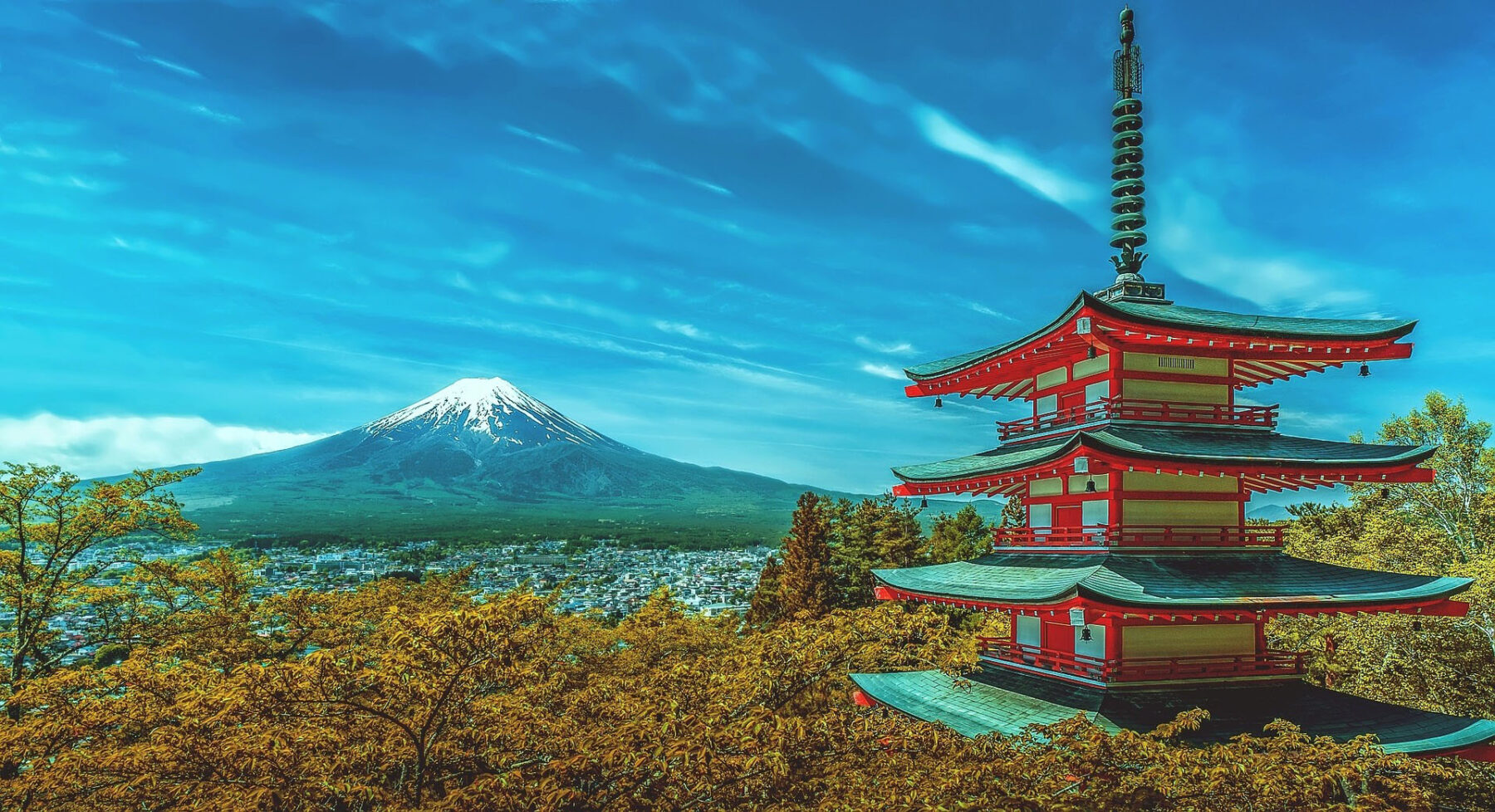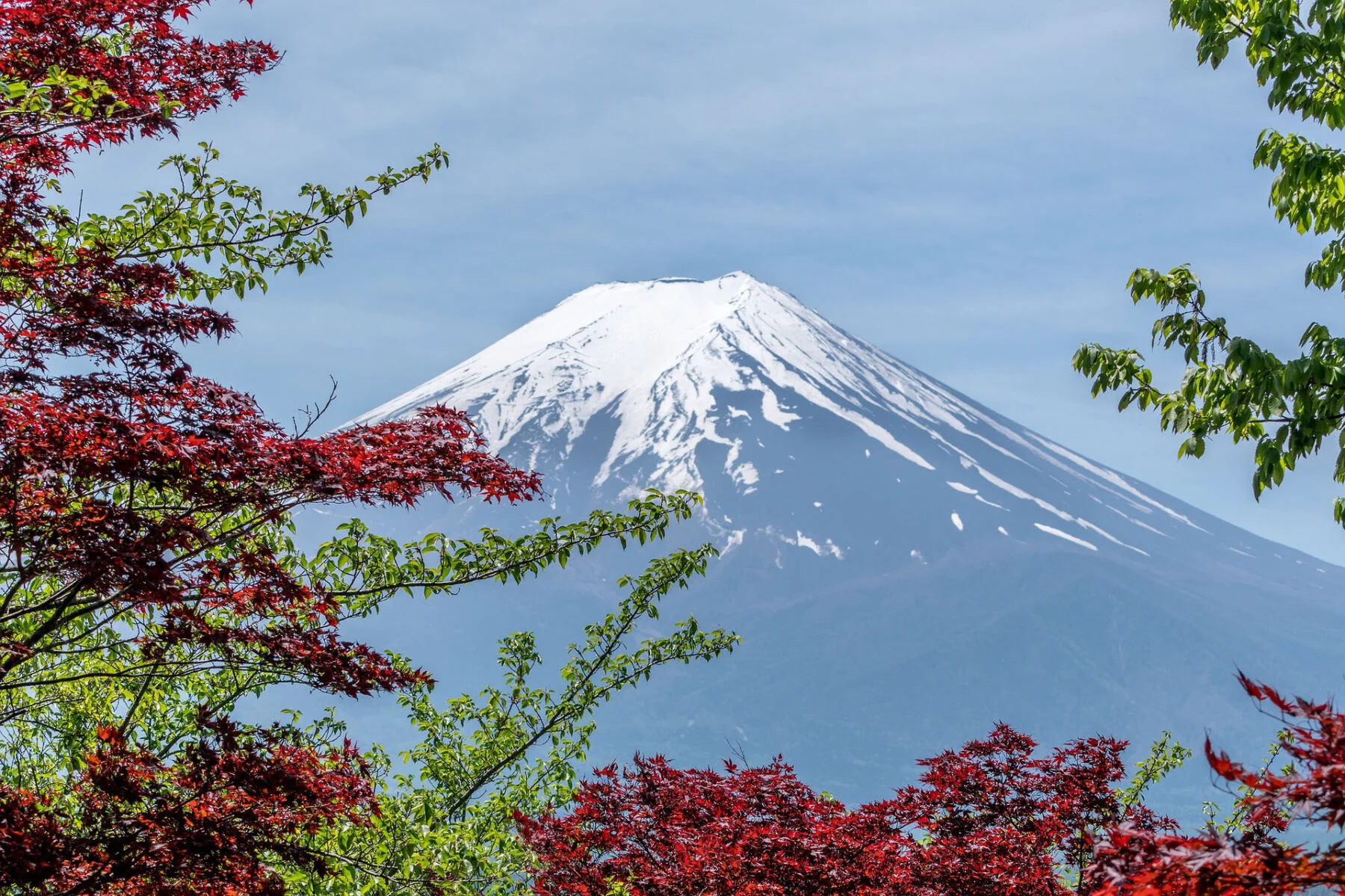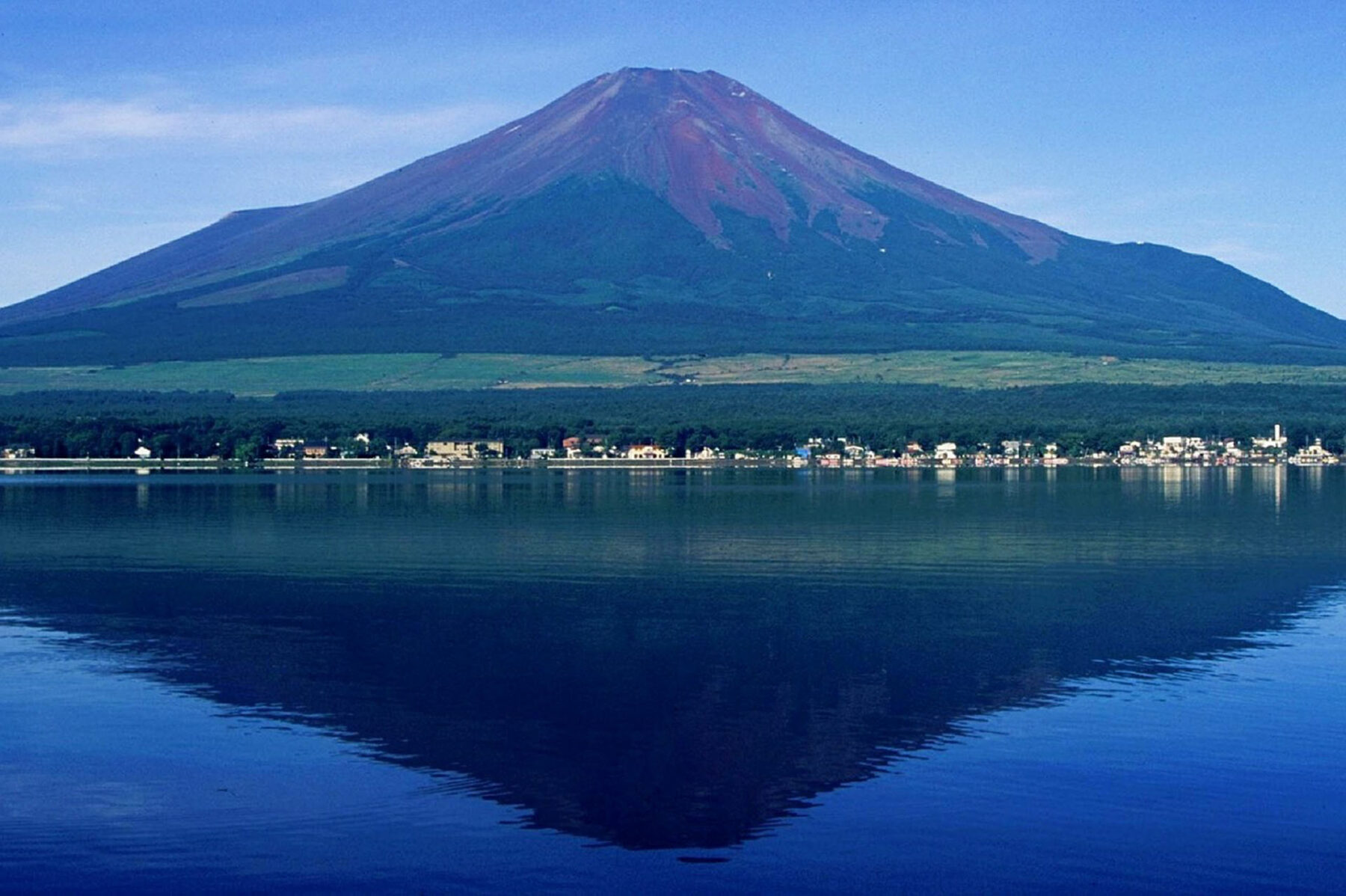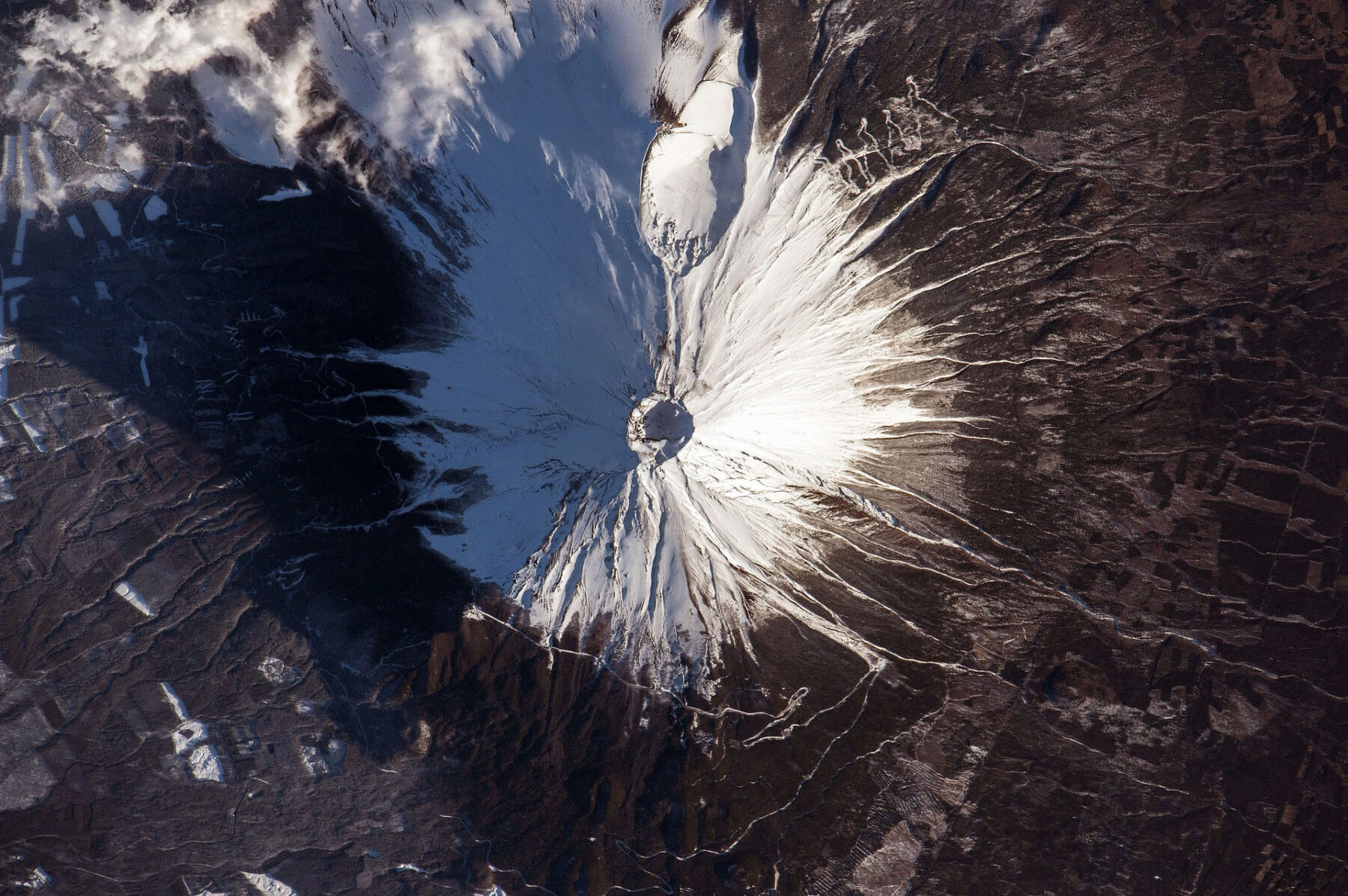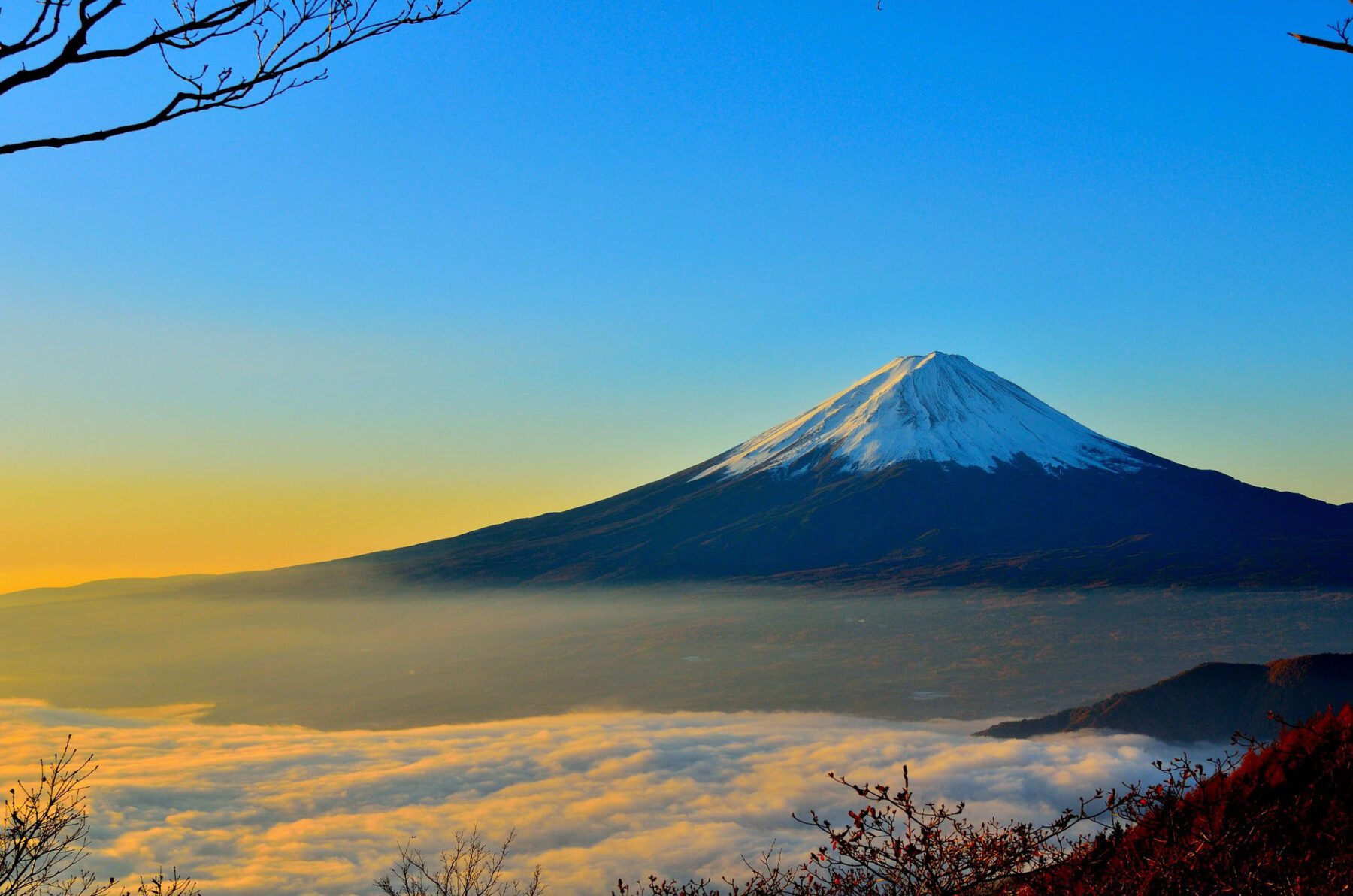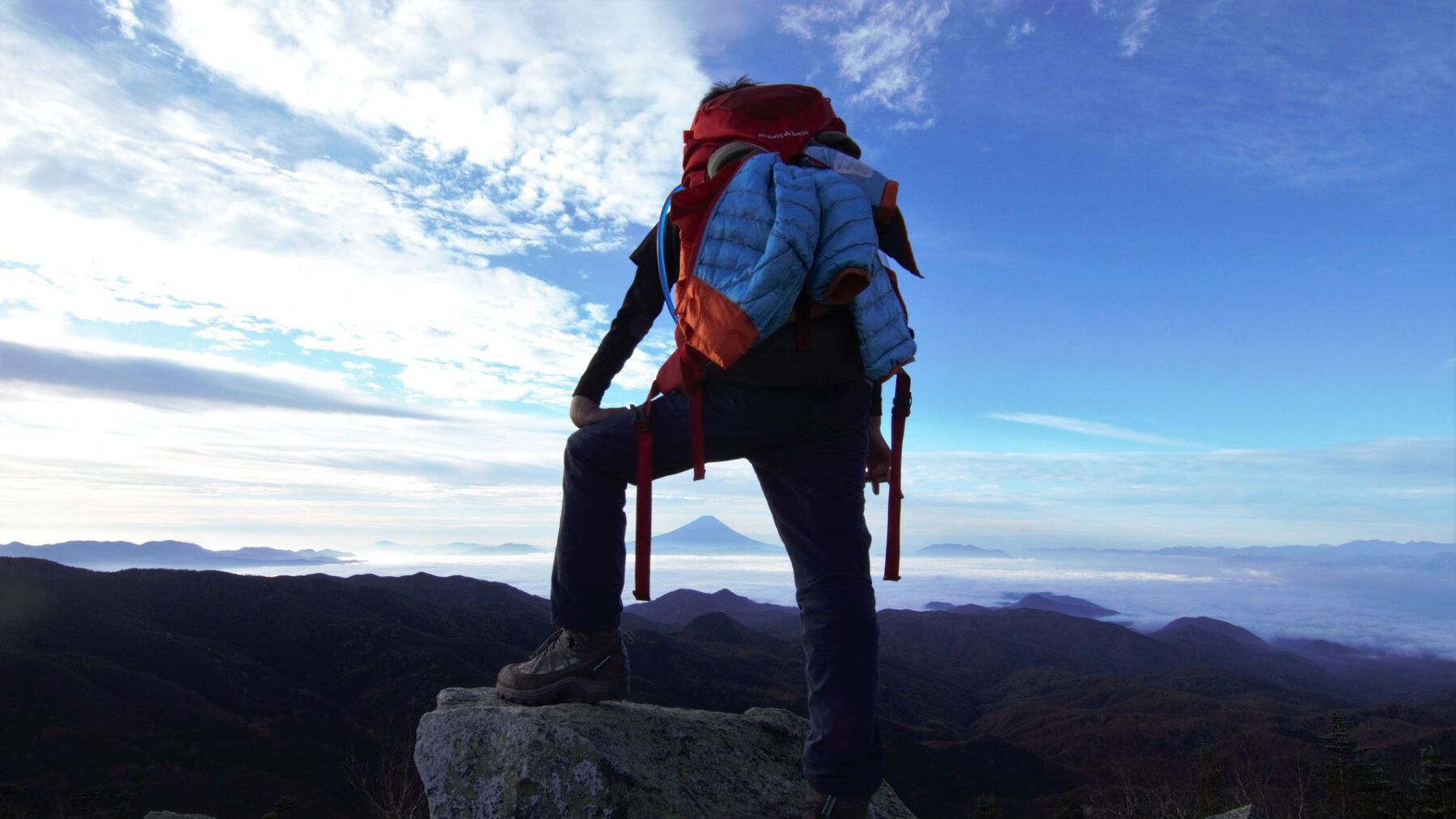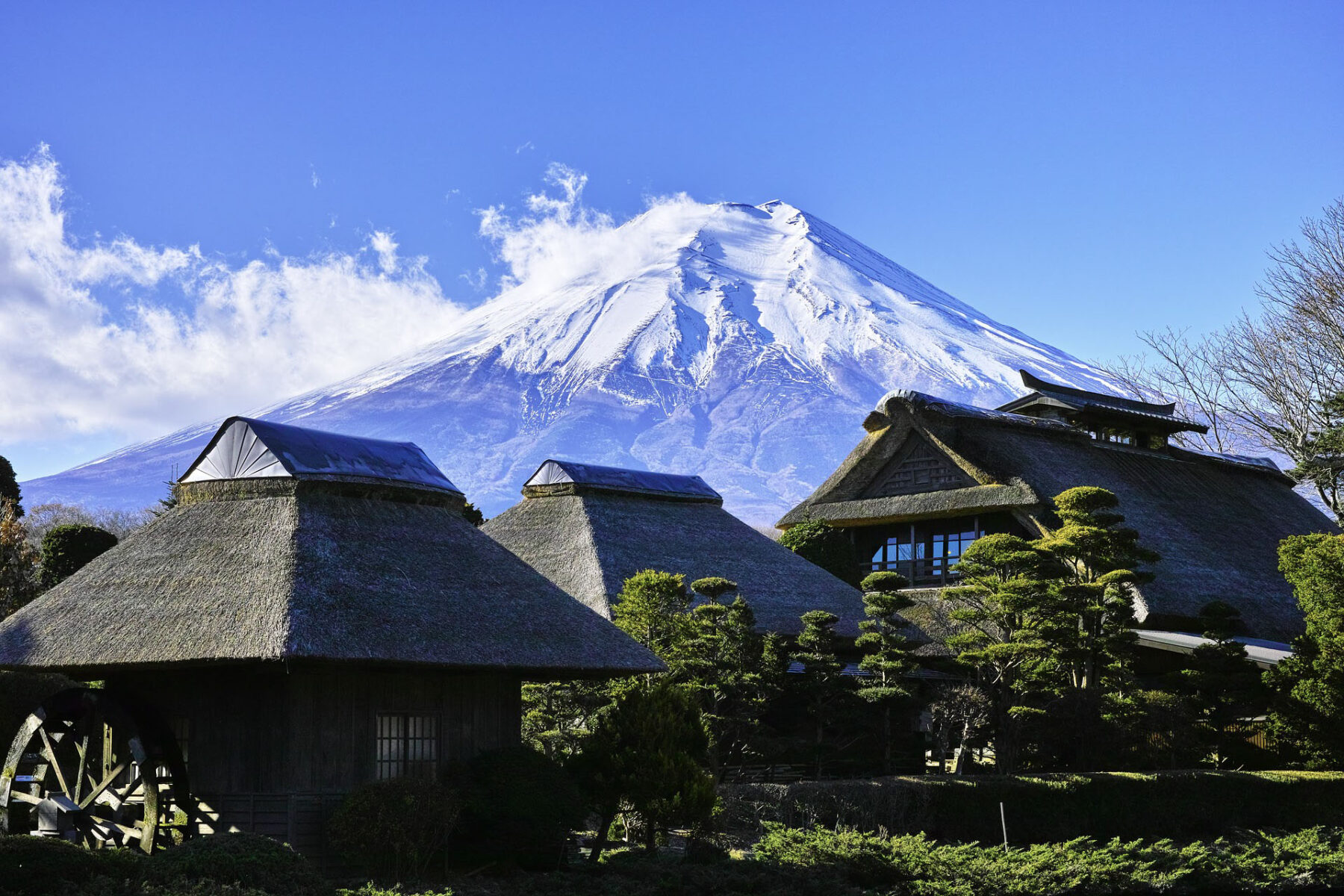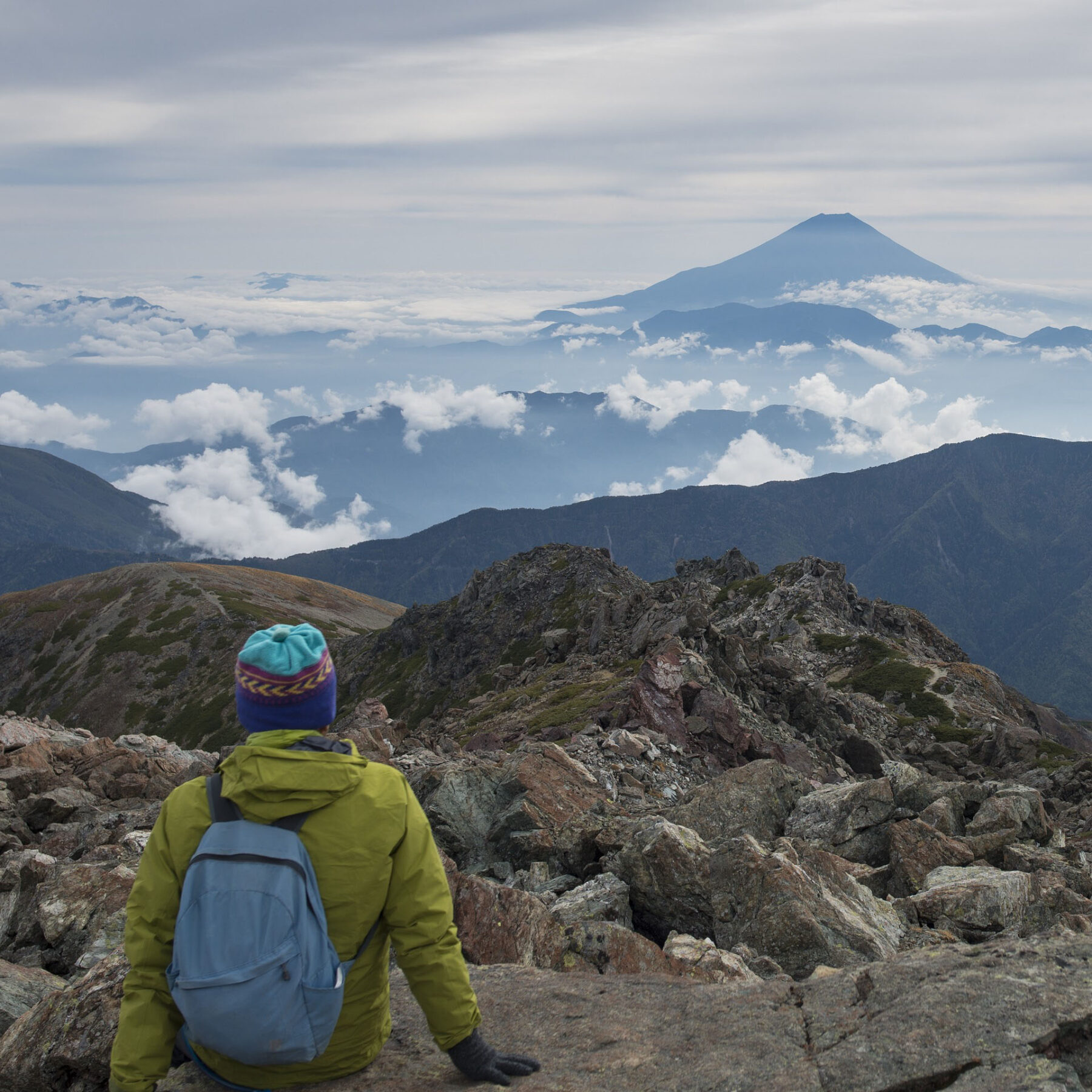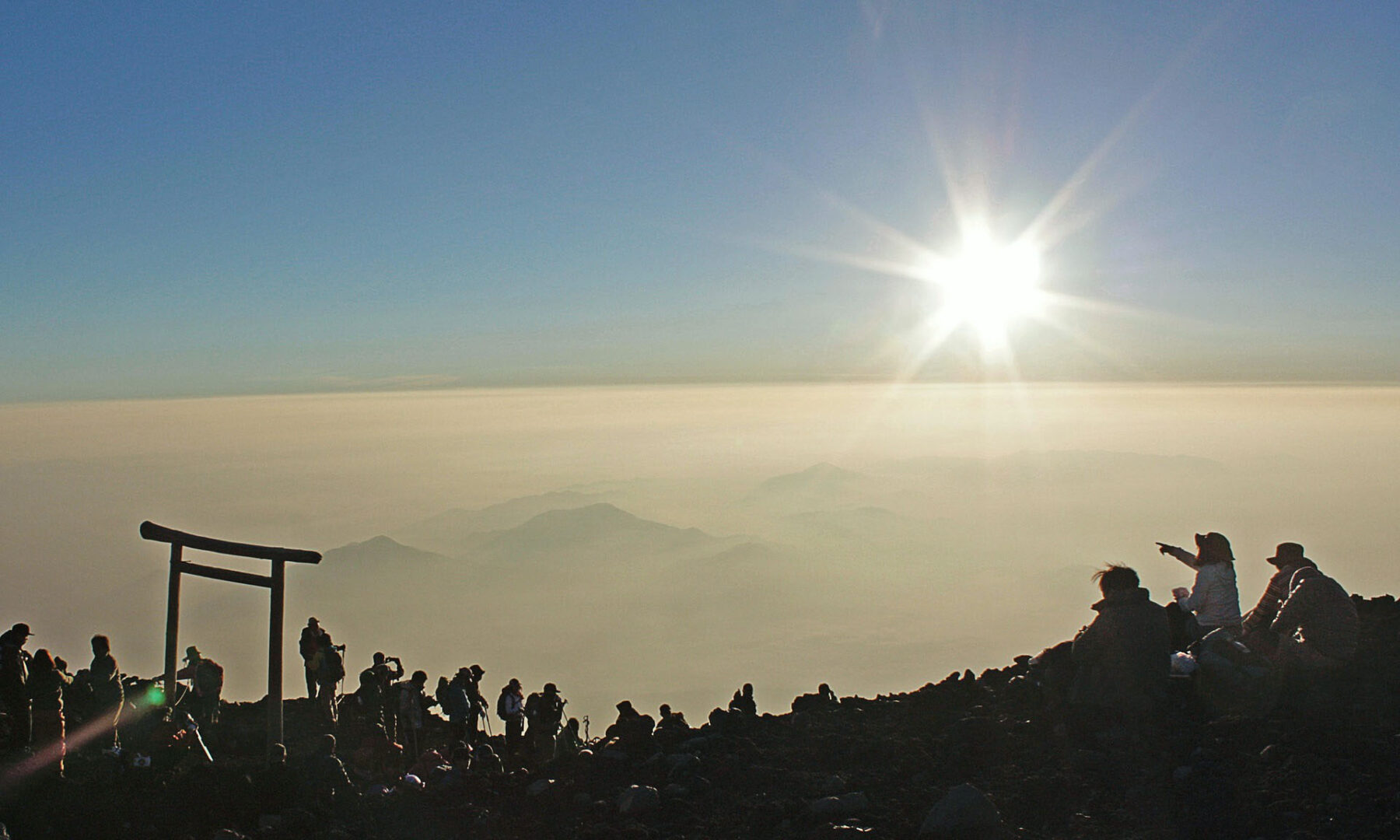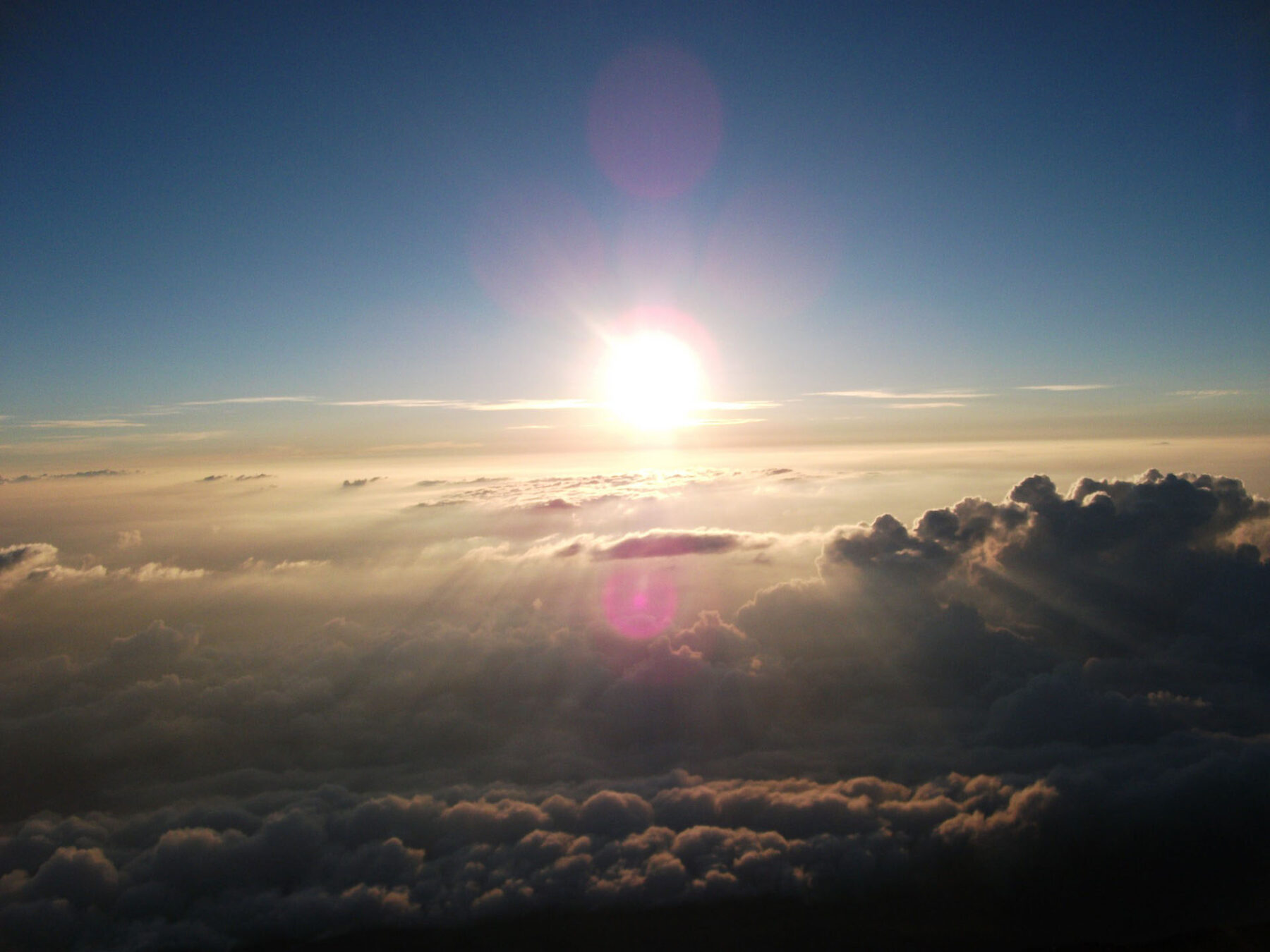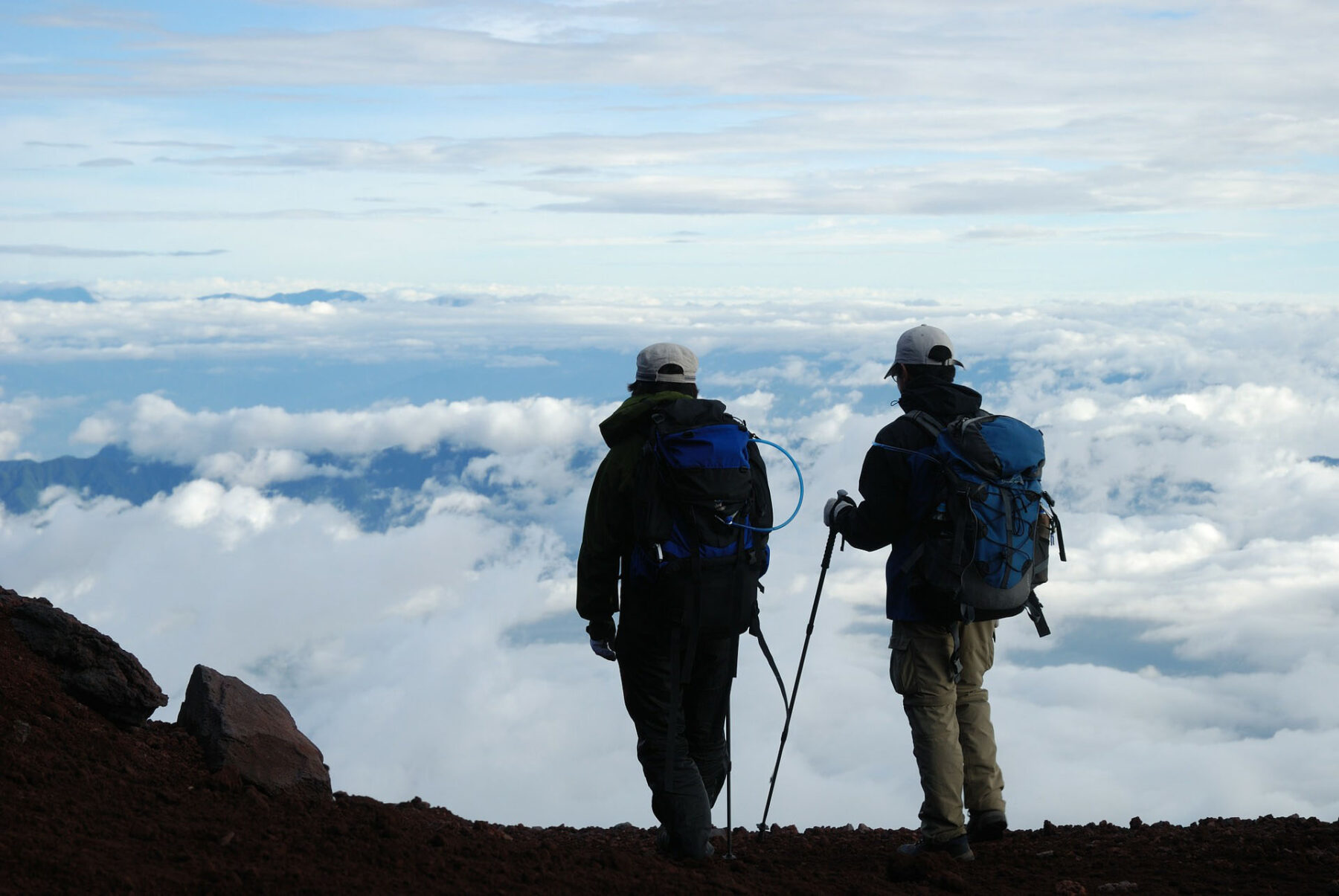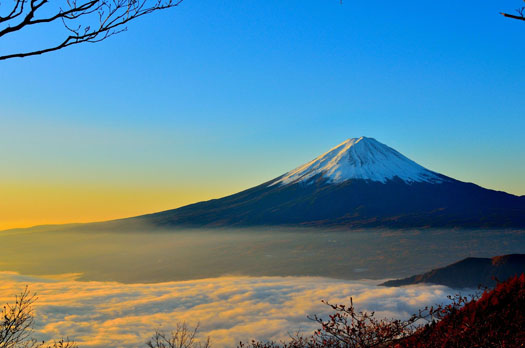 An almost perfectly conical volcano, Mount Fuji is a familiar symbol of Japan, located 70 mi southwest of Tokyo. It is 12,388 ft high and beautifully snow-capped in winter. Ascending the mountain in summer does not require any special mountain-climbing skills or equipment, though it does require good shoes, warm clothing and a reasonable level of fitness. Five trails lead to the summit; each has 10 rest stations along the way.
An almost perfectly conical volcano, Mount Fuji is a familiar symbol of Japan, located 70 mi southwest of Tokyo. It is 12,388 ft high and beautifully snow-capped in winter. Ascending the mountain in summer does not require any special mountain-climbing skills or equipment, though it does require good shoes, warm clothing and a reasonable level of fitness. Five trails lead to the summit; each has 10 rest stations along the way.
The vast majority of climbers take a bus halfway to the top and begin hiking from the fifth station (the climb from there to the summit takes five to six hours). Starting from the bottom is tricky because lower sections of the trails are signposted only in Japanese. Very basic dormitory accommodation is provided in shelters; take as much food and water as you can carry to avoid prices bordering on extortion (US$3 for a pint/half-liter of water). Though the hike is quite strenuous, we found it to be a fascinating encounter with this country, and, if you are lucky with the weather, the view is spectacular.
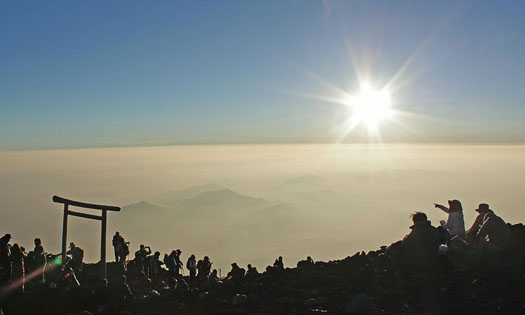 The best views are usually at sunrise or sunset (clouds often cloak Fuji’s peak during the day in summer). Most people hike up at night (take a flashlight and warm clothes) or overnight at one of the stations. Basic huts (meals provided) should be booked in advance through the Japan National Tourist Organization. Daytime hikers should avoid the trek on Sunday, when Japanese nature-lovers clog the trails (don’t be surprised by the mountains of litter along the way). Friday and Saturday nights are also extremely congested, so try stick to a weekday if possible. The season for climbing is July-August.
The best views are usually at sunrise or sunset (clouds often cloak Fuji’s peak during the day in summer). Most people hike up at night (take a flashlight and warm clothes) or overnight at one of the stations. Basic huts (meals provided) should be booked in advance through the Japan National Tourist Organization. Daytime hikers should avoid the trek on Sunday, when Japanese nature-lovers clog the trails (don’t be surprised by the mountains of litter along the way). Friday and Saturday nights are also extremely congested, so try stick to a weekday if possible. The season for climbing is July-August.
Inexperienced hikers should also be warned that Fuji is easy to climb, but seriously high. Instances of altitude sickness occur and many hapless travelers end up wearing garbage bags as jackets when the balmy evening at the first stage drops to near freezing at the summit. Take a fleece and raincoat, no matter how good the weather is upon setting out.
Other scenic areas close to Mount Fuji include the Fuji Five Lakes (beautiful scenery); the Izu Peninsula (hot-spring resorts, beaches and picturesque fishing villages); Hakone (small mountains with hot-spring resorts, forest hiking, the Open Air Sculpture Museum, a large lake and a good view of Mount Fuji if you would prefer to just see it rather than climb it); and the Seven Isles of Izu (tiny volcanic islands with beaches and good snorkeling).
Explore More in Japan
 Palace Hotel Tokyo
Palace Hotel Tokyo
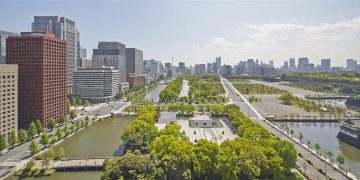
The floor-to-ceiling windows of the Palace Hotel Tokyo reveal the iconic scenery of the Imperial Palace gardens and moats.... read more
 Exceptional Experiences in Japan Exceptional Experiences Abound
Exceptional Experiences in Japan Exceptional Experiences Abound
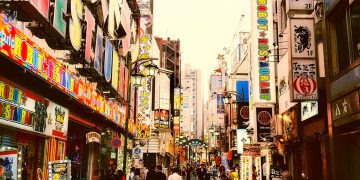
Take an urban photo safari, Spend 10 days exploring Japan's spiritual side, and taste the best in traditional Japanese cuisine... read more








